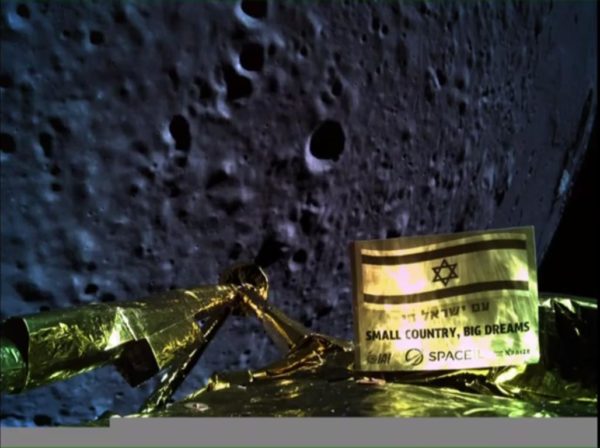Israel has failed in its pioneering mission to explore the Moon landing as the observatory lost communication with the spacecraft Beresheet.
There are speculations the $100million spacecraft crashed on the moon surface.
If it had succeeded it would have been the first lunar mission by a non-governmental organisation to Earth’s closest neighbour.
The spacecraft was expected to land on the moon today. But instead, it crashed onto the moon after a series of technical failures during its final descent, shattering hopes of a historic controlled landing on the lunar surface.
The unmanned robotic lander suffered periodic engine and communications failures during the landing sequence, which lasted around 21 minutes, the support team said.
Beresheet, whose name is Hebrew for the biblical phrase ‘In the beginning’, had traveled through space for seven weeks in a series of expanding orbits around Earth before crossing into the moon’s gravity last week.
The final maneuver on Wednesday brought it into a tight elliptical orbit around the moon, around 15 km (9 miles) from the surface at its closest. From there it was a short, nail-biting and ultimately disappointing conclusion.
“It seems that a failure in our inertial measurements unit caused a chain of events in the spacecraft avionics which cut off the engines and caused us to lose the mission,” said Opher Doron, general manager of the space division at Israel Aerospace Industries (IAI).
So far, only three nations have succeeded in carrying out a “soft”, or controlled, landing on the lunar surface: the United States, the Soviet Union and China.
Beresheet would have been the first craft to land on the moon that was not the product of a government program. It was built by state-owned IAI and Israeli non-profit space venture SpaceIL with $100 million funded almost entirely by private donors.
Still, the spacecraft achieved some milestones.
“It is by far the smallest, the cheapest spacecraft ever to get to the moon,” said Doron. “It’s been an amazing journey, I hope we get a chance for another one.”
Shaped like a round table with four carbon-fibre legs, Beresheet stood about 1.5 meters (4.9 feet) tall. It blasted off from Florida’s Cape Canaveral on Feb. 21 on a SpaceX Falcon 9 rocket and entered Earth’s orbit about 34 minutes after launch.
Its circuitous flight path was around 4 million miles (6.5 million km). A direct route from the Earth to the moon covers roughly 240,000 miles (386,000 km).
The probe, weighing just under 600 kilogrammes and measuring 1.5 metres in height, is to place an Israeli flag on the moon and examine its magnetic field.
Its launch in February was the fruit of an eight-year-long project undertaken by the SpaceIL non-profit organisation and Israel Aerospace Industries (IAI).
Although the IAI is a governmental organisation, the funds for the mission were largely raised independently.

 Football1 day ago
Football1 day ago
 Business1 week ago
Business1 week ago
 Business1 week ago
Business1 week ago
 Education1 week ago
Education1 week ago
 Crime1 week ago
Crime1 week ago
 Covid-191 week ago
Covid-191 week ago
 Latest5 days ago
Latest5 days ago
 Business1 week ago
Business1 week ago

